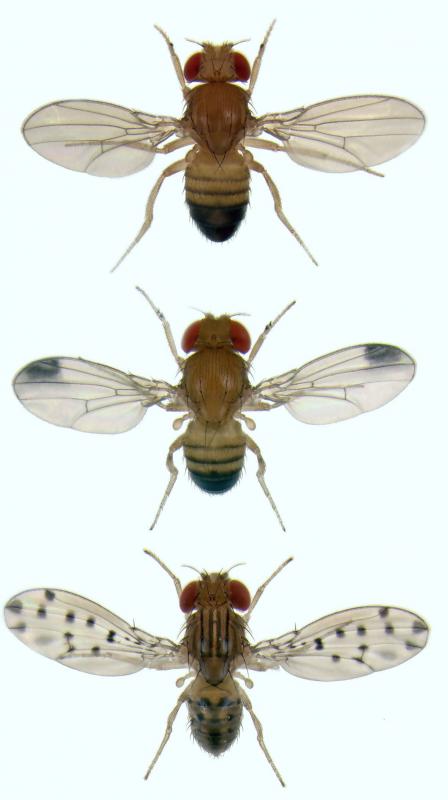At AllThingsNature, we're committed to delivering accurate, trustworthy information. Our expert-authored content is rigorously fact-checked and sourced from credible authorities. Discover how we uphold the highest standards in providing you with reliable knowledge.
What Is a Pygmy Chameleon?
A pygmy chameleon is a small lizard native to tropical forests and savannahs in Africa. Named for its diminutive size, the adult pygmy chameleon averages 3 to 4 inches (7.6 to 10 centimeters) in length. Coloration ranges from white to the color of fallen leaves, and includes various shades of green, brown, gold, and orange. There are several different species, including bearded, Thiel’s, Kenyan, and pitless pygmy chameleons. Some other species are the rosette-nosed, Montane, horned, and spectral pygmy chameleons.
All pygmy chameleons have the ability to change their color to blend in with their surroundings. They make a buzzing sound when they are stressed, a characteristic that may have been developed to frighten predators. These tiny reptiles spend most of their time on the ground, vulnerable to becoming prey, so their ability to change color is generally their only protection.

Some pygmy chameleons display other qualities unique to their species. For example, the pitless pygmy chameleon has the same brown coloration as a dead leaf, with dark lines resembling veins. This species is slightly larger than other pygmy chameleons, with a length at maturity between 5 and 7 inches (12.7 and 18 centimeters).
The bearded pygmy chameleon is named after the raised scales located below its mouth. This species isn’t as colorful as some other chameleons, spending most of its time sporting various shades of brown when not changing color for camouflage. It can even flatten its body shape slightly and form a dark stripe on its back to fool predators into seeing it as a leaf.

Female pygmy chameleons are generally larger than males, with wider, more rounded bodies and shorter tails. They reproduce sexually, and then several weeks after fertilization dig a hole and lay their eggs. Each female can reproduce approximately four times a year, laying four to six eggs in each clutch.
A pygmy chameleon’s diet consists of live prey such as mealworms, fruit flies, and small crickets. They catch their prey with long, sticky tongues. Their small size makes them appealing pets for people who have limited space or a limited budget since they don’t require as much space as most other lizards. The pygmy chameleon is delicate due to its tiny size and must be handled carefully to avoid injury. Kenyan pygmy and bearded pygmy chameleons are the ones most commonly found in pet stores, but some other species are occasionally available as well.
Frequently Asked Questions
What is a pygmy chameleon?
A pygmy chameleon is a member of the genus Rhampholeon or Brookesia, which are among the smallest chameleons in the world. These tiny reptiles are known for their diminutive size, with some species measuring just a few centimeters in length. They are adapted to live on the forest floor, blending in with leaf litter and underbrush.
Where can pygmy chameleons be found in the wild?
Pygmy chameleons are primarily found in the rainforests of Eastern Africa, with a high concentration in countries like Tanzania and Malawi. Their habitats are often threatened by deforestation and habitat destruction, which has led to concerns about their conservation status.
How do pygmy chameleons differ from other chameleons?
Pygmy chameleons differ from other chameleons in size, habitat preference, and behavior. They are much smaller, often living on the forest floor rather than in trees. Unlike their arboreal cousins, pygmy chameleons do not have prehensile tails, as they do not need to grasp branches. Their coloration is also more subdued, aiding in camouflage among leaf litter.
What do pygmy chameleons eat?
Pygmy chameleons feed on a diet of small insects and other invertebrates. They are sit-and-wait predators, remaining motionless until prey comes within striking distance. Their diet typically includes items like mites, flies, and small beetles, which they catch using their long, sticky tongues.
How do pygmy chameleons reproduce?
Pygmy chameleons engage in live birth, which is relatively rare among reptiles. Females give birth to a small number of fully formed young, bypassing the egg stage entirely. This reproductive strategy is thought to be an adaptation to their moist forest floor habitat, where eggs might be susceptible to mold and predation.
Are pygmy chameleons endangered?
The conservation status of pygmy chameleons varies by species, but many are considered at risk due to habitat loss and the pet trade. For example, the spectral pygmy chameleon (Rhampholeon spectrum) is listed as Vulnerable by the IUCN Red List, indicating that it faces a high risk of extinction in the wild.
AS FEATURED ON:
AS FEATURED ON:












Discuss this Article
Post your comments